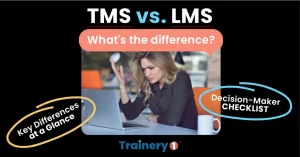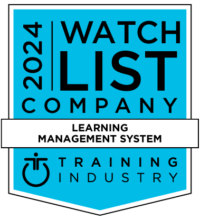As HR professionals, we need to understand what trust really means in the workplace, and how to best build trust between the HR team and employees in the organization.
Thinking about trust and teamwork often inspires an analogy to sports. My 13-year-old granddaughter is playing on the middle school basketball team. She’s also on the swim team, water polo team, and the tennis team. During this past season, she was the highest scorer on the basketball team. Unfortunately, she was just about the only scorer, and their team lost half of the games. It seems that the other players trusted that she would score.
Michael Jordan won six NBA championships with the Chicago Bulls. Five starters were superstars but individually, they had complex relationships. Nevertheless, when they took to the court, the team became an unstoppable force as they all worked like a well-oiled machine. What’s the difference?
Jumping the Trust Barrier
It’s not uncommon to find two mindsets: the HR executives that believe their only job is to do what is best for the company, and the HR executives who believe they should keep the best interest of the employee top of mind. HR leaders should be an advocate for the organization and for the employee.
Trust is the firm belief in the reliability, truth, ability, or strength of someone or something.
How can HR build trust?
The most important element is TRUTH. Without it, you will never build trust. If an employee asks a question to which you cannot honestly answer, for whatever reason, simply say “I am not at liberty to discuss that with you today” or “That is a confidential matter that I cannot discuss”. To do otherwise (i.e. not telling the truth) will destroy any trust or confidence an employee will have in you.
A good mantra for executive teams is: Speak Truth to Power. When speaking to the CEO, senior management, or your supervisor, say what you believe and not what you think they want to hear. Think strategically about your answer, and explain why a certain course of action is recommended. Organizational leaders need to have faith in HR, and HR leaders need to be key players in developing organizational strategies. You will never earn a seat at the table without respect.
The best tips that I’ve seen for how HR can build trust was published by ADP, a global leader for payroll services and human resources management software.
- Communicate clearly and effectively. Be straightforward and communicate company policies, practices, and strategies in ways that employees will understand. Be clear about what the company expects of employees and what they can expect from the company.
- Think strategically.In the past, HR was looked at as a purely transactional role, mostly focusing on employee recordkeeping and benefits administration. However, HR has increasingly taken a more strategic role at many companies, providing valuable insight about employees’ needs and how decisions may impact employees.
- Deliver policies that improve satisfaction.How employees feel about their job, their employer (including HR), and their future with the company can have a significant impact on productivity, absenteeism, and turnover Things like autonomy, a fair and equitable workplace, challenging work, recognition, flexibility, and a company’s commitment to social responsibility may also be strong motivators.
- Foster an equitable and inclusive workplace.Make sure that your hiring practices are free of bias, that employees are paid fairly when compared with other employees in your company and take all complaints seriously. Administer your disciplinary action policy on a consistent basis regardless of who is involved.
- Train your HR team.Adequately train HR on how employment laws impact your business and how to properly respond to employee complaints, conduct effective investigations, handle leave requests, and manage other important responsibilities.
- Hold supervisors accountable. Few things can undermine HR more than supervisors going “rogue.” Train supervisors on all workplace policies and how to administer them.
- Document.Thorough documentation can help demonstrate compliance with various laws, support employment decisions, and ensure that everyone is on the same page.
- Get feedback. Solicit employee feedback. When employees do share ideas and feedback, let them know you will take their suggestions seriously. Remember to recognize employees for their contributions and give them credit for any ideas that are ultimately implemented.
Simon Sinek, author, motivational speaker and founder of Sinek Partners said, “A team is not a group of people who work together. A team is people who trust each other”. Jumping the HR Trust Barrier requires just that.







